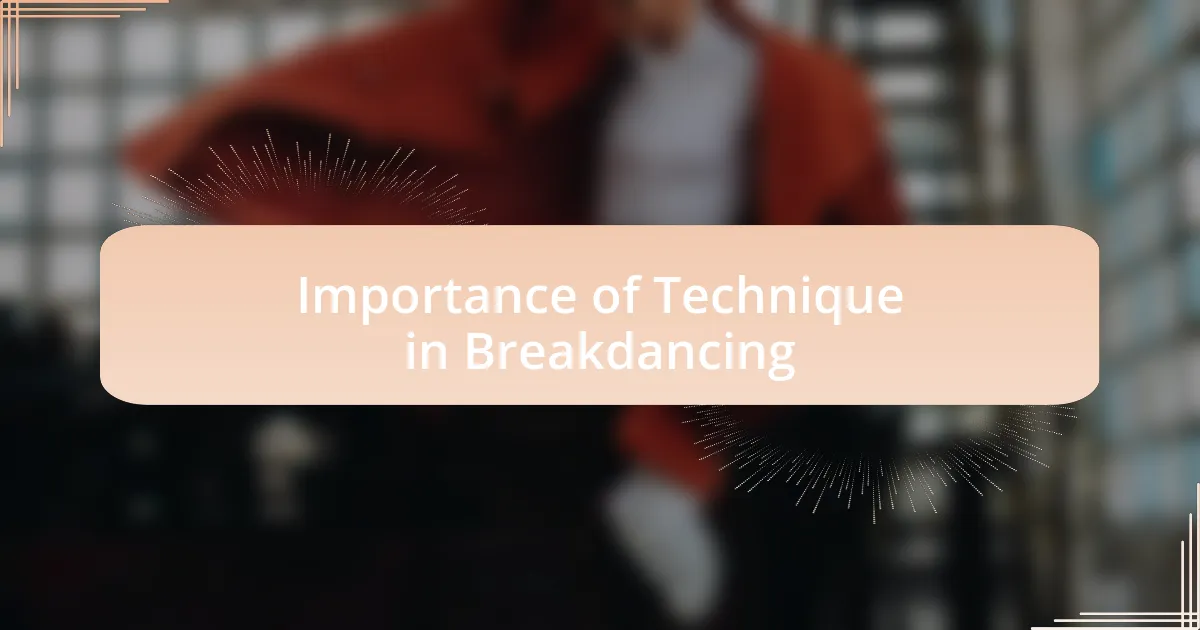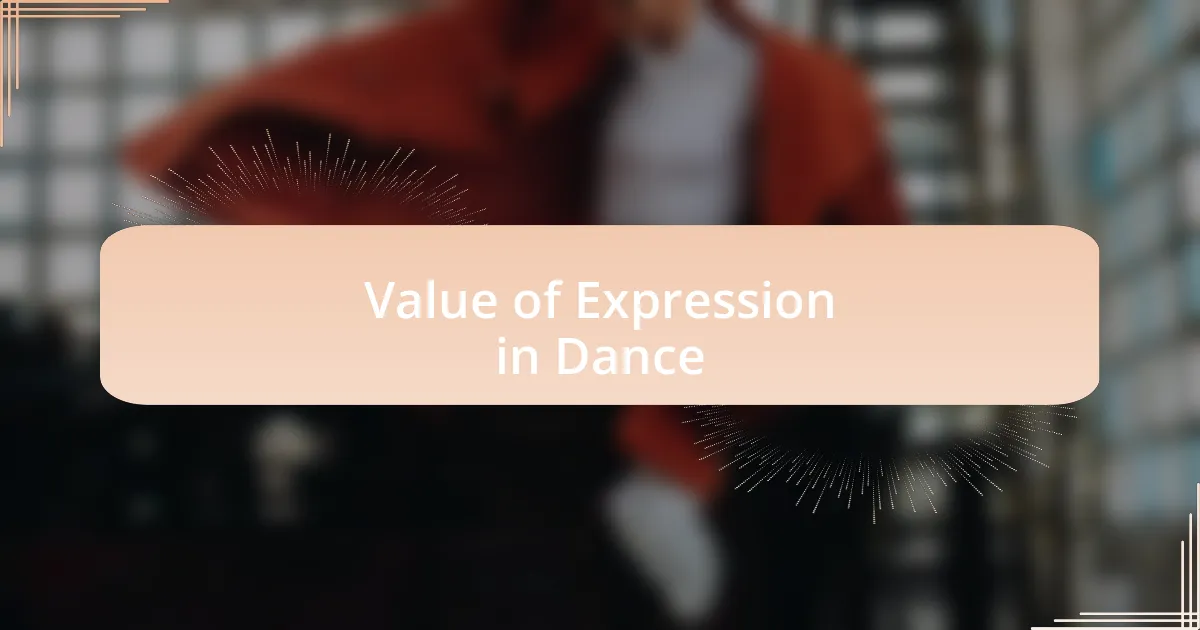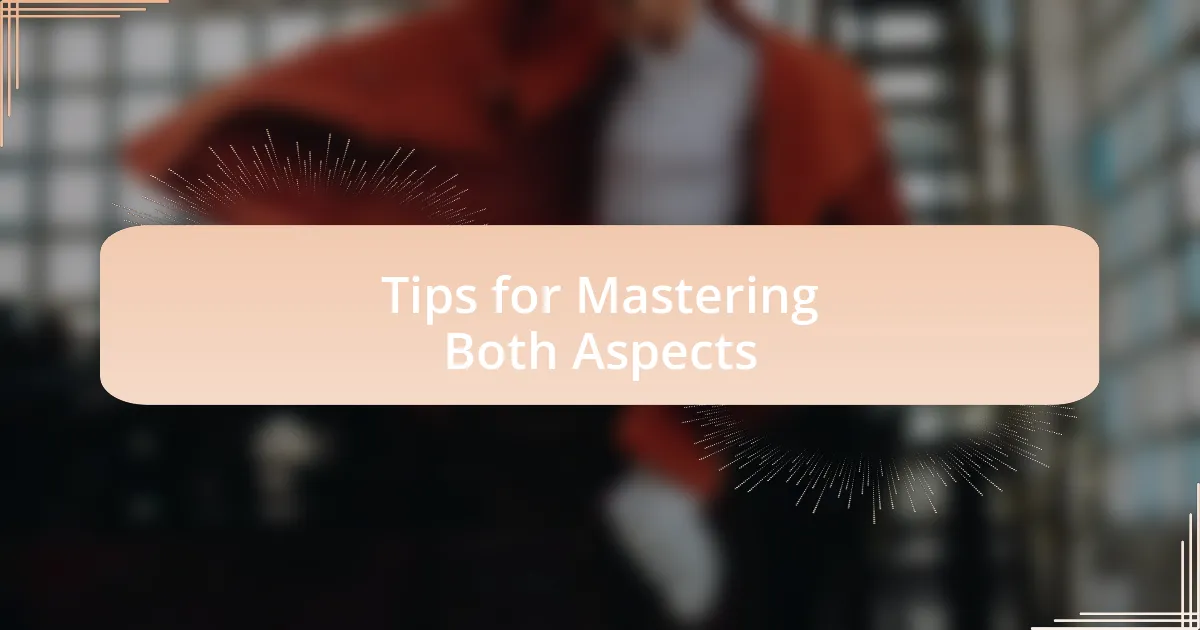Key takeaways:
- Breakdancing combines four fundamental elements: toprock, downrock, power moves, and freezes, emphasizing the importance of rhythm and footwork before advancing techniques.
- Mastering technique enhances individual expression and creativity, empowering dancers to experiment and find their unique style.
- Expression in dance transcends performance, creating emotional connections with the audience and fostering a sense of community among dancers.
- Balancing technique and expression is essential; technique should enhance the emotional narrative rather than overshadow it, promoting authenticity over mere precision.

Understanding Breakdancing Basics
Breakdancing, often referred to as b-boying, is not just a dance style; it’s a culture that intertwines music, movement, and expression. I remember my first time watching a battle—those dynamic spins and freezes had me on the edge of my seat. Can you imagine how it feels to see those sequences loop in real life? Each move not only reflects the dancer’s skill but also their personality, making every performance unique.
At its core, breakdancing consists of four fundamental elements: toprock, downrock, power moves, and freezes. These terms may sound technical, but they describe the flow of movement that defines the dance. When I first learned to toprock, I felt this impressive sense of connection to the music; it wasn’t just about getting the steps right, but also about feeling the rhythm and letting it guide me. Isn’t that what we all strive for in dance—finding that sweet spot where our body moves in harmony with the beat?
Understanding basic footwork is essential before jumping into more advanced techniques. I remember struggling with the six-step; it felt awkward at first but, with practice, it became a smooth transition that opened the door to more complex moves. Have you ever experienced that moment when everything clicks? Each small victory in breakdancing is a step toward mastering the dance, and the journey is just as valuable as the destination.

Importance of Technique in Breakdancing
Mastering technique in breakdancing is crucial for turning your passion into true artistry. I vividly recall the countless hours spent perfecting my baby freezes. The first time I held one for more than a second, I felt an exhilarating mix of pride and disbelief—it was a clear indication that my hard work was paying off. Isn’t it fascinating how refining a single move can elevate your entire performance?
Without a strong foundation in technique, it’s easy to overlook the rhythm and flow that make breakdancing compelling. I remember watching a seasoned b-boy effortlessly transition between power moves and toprock; it was like watching a painter create a masterpiece in real-time. Observing the technical precision made me realize that each component supports the whole, and that’s something every dancer should strive for.
Moreover, technique not only enhances individual expression but also fosters creativity. Think about it: when you’re confident in your fundamentals, you’re free to experiment and find your unique style. I often encourage newcomers to spend time drilling basics, as it’ll enable them to push boundaries. Isn’t it liberating when a dancer feels empowered by their skillset to innovate within the dance?

Value of Expression in Dance
Expressing oneself through dance is not just a performance; it’s a form of communication that transcends words. I remember the first time I danced in front of an audience, feeling my heart race as I poured every emotion into my movements. The connection with the audience was palpable, and it hit me then: expression is what makes dancing an emotional experience rather than just a physical one.
When I see a dancer truly embody their music, I can’t help but feel inspired. There’s something magnetic about the way their body mirrors the rhythm and soul of the track. It reminds me of a time I improvised during a battle, letting go of every inhibition. The crowd’s reaction ignited a powerful flame within me, showcasing how raw emotion can shape not just a performance but also the dancer’s identity.
Expression also serves as a bridge between dancers. I find that sharing emotions on the floor cultivates a sense of community. One night, while jamming with friends, we all started feeding off each other’s vibes, creating an electrifying atmosphere. This exchange of feelings through movement reinforced the notion that dance is a shared experience, enriching our journey as artists and friends. How often do you find yourself uplifted, not just by your own expression but by witnessing someone else’s?

Finding the Balance in Breakdancing
Finding the balance between technique and expression in breakdancing is crucial for every dancer. I remember a practice session where I focused too much on nailing the intricate footwork of a freeze. In that moment, I lost the essence of what I wanted to convey; my performance felt robotic. It hit me then: technique should enhance, not overshadow, the emotional narrative.
Drawing from my experiences, I believe that mastering foundational moves creates a strong platform for artistic expression. One evening, I worked on refining my headspin—an essential skill in my arsenal. As I gained confidence, I began to add flavor and personality to my spins, turning a technical maneuver into a personal signature. Isn’t it fascinating how a single move can tell a story if infused with genuine emotion?
Sometimes, I find myself wrestling with the pressure to display flawless technique versus the urge to feel the music deeply. In one battle, I let my nerves take over and prioritized perfection over passion. Afterwards, I realized that the audience connects more with authenticity than mere precision. Have you ever felt that rush when you let go of the need to impress and simply danced for yourself?

Tips for Mastering Both Aspects
One effective tip for balancing technique and expression is to practice improvisation regularly. I remember a session where I turned on my favorite music, closed my eyes, and just moved. It felt liberating to let my body respond to the rhythm without worrying about executing perfect moves. Have you ever tried dancing like no one is watching? It’s in those moments of pure freedom that I discover my style and emotions shine through more than when I’m meticulously counting beats.
Another approach is to combine structured practice with spontaneous sessions. After refining a difficult trick like my windmill, instead of stopping there, I challenge myself to add layers of expression. I often ask myself: “How can I make this moment more me?” During one particular practice, while attempting a series of moves, I experimented with different body angles and facial expressions, which transformed my entire routine into something uniquely expressive. This balance made me realize that the technical work is merely the backbone that supports my creative flow.
Lastly, setting clear intentions before each practice can keep your focus aligned. I often choose themes or emotions to explore; on a day inspired by joy, I allow myself to be playful in my movements. Have you noticed how choosing a mood can change your approach? One time, dancing with the intention of embodying power made my transitions feel stronger and more impactful. This conscious effort helps me to blend the precision of technique with the depth of expression seamlessly.